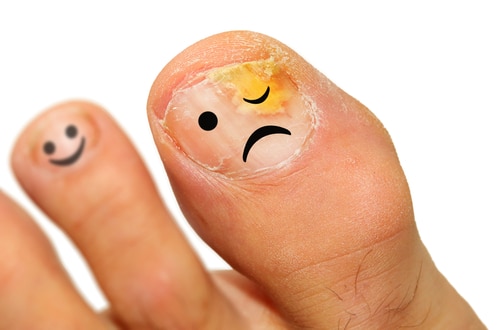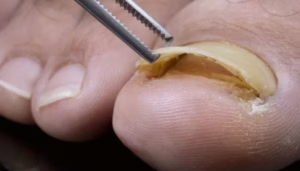Foot fungus is one of those pesky conditions that can sneak up on anyone. Whether it’s athlete’s foot, toenail fungus, or general fungal infections, it’s not only unsightly but can also cause discomfort if left untreated. But don’t worry — at ModPod Podiatry, we know all the tried-and-true strategies to help you get rid of fungus on your feet for good. Let’s dive into the causes, symptoms, and most importantly, how to treat and prevent fungal foot infections.
What Causes Foot Fungus?
Fungal infections thrive in warm, moist environments, which makes your feet the perfect breeding ground, especially if they’re frequently enclosed in socks and shoes. Some common culprits behind foot fungus include:
- Dermatophytes: These fungi are responsible for conditions like athlete’s foot and toenail fungus.
- Yeast and moulds: While less common, these can also infect the feet, particularly in individuals with weakened immune systems.
Contributing factors include:
- Wearing tight, non-breathable shoes
- Sweaty feet or poor foot hygiene
- Walking barefoot in communal areas like swimming pools, gyms, or public showers
- Having a weakened immune system
- Minor skin injuries or nail damage
Recognising the Symptoms of Foot Fungus
It’s important to spot the early signs of fungal infections so you can start treatment straight away. Symptoms may include:
- Red, itchy, or scaly skin, especially between the toes
- Cracked, peeling, or flaking skin
- Discoloured, thickened, or brittle toenails
- Unpleasant foot odour
- Blisters or ulcers in severe cases
If any of these sound familiar, it’s time to take action!
Effective Ways to Get Rid of Fungus on Your Feet
1. Maintain Proper Foot Hygiene
Good hygiene is your first line of defence. Here’s how:
- Wash your feet daily: Use warm water and a mild soap, paying special attention to the areas between your toes.
- Dry thoroughly: Fungus loves moisture, so be sure to completely dry your feet after washing, especially between the toes.
- Change socks regularly: Opt for moisture-wicking socks and change them at least once a day, or more if you’re prone to sweaty feet.
2. Use Antifungal Creams or Sprays
Over-the-counter antifungal products can be highly effective in treating mild fungal infections. Look for active ingredients like clotrimazole, terbinafine, or miconazole. Apply as directed, usually twice daily, and continue treatment for at least two weeks after symptoms disappear to prevent recurrence.
3. Try Antifungal Powders
If your feet tend to sweat a lot, antifungal powders can help keep them dry while also treating the infection. Sprinkle some in your shoes and socks daily to absorb moisture and reduce the fungal load.
4. Consider Prescription Treatments
For more stubborn cases, your podiatrist may recommend prescription-strength antifungal creams, oral medications, or medicated nail lacquers. Oral antifungals are particularly effective for severe toenail infections but may require several months of treatment.
5. Laser Therapy
At ModPod Podiatry, we offer laser therapy for fungal toenail infections. This cutting-edge, non-invasive treatment targets the fungus beneath the nail without harming the surrounding tissue. It’s a great option for those who prefer to avoid long-term medication.
6. Home Remedies – Proceed with Caution
While there are numerous home remedies touted online — such as tea tree oil, vinegar soaks, or Vicks VapoRub — their effectiveness is variable, and they may not work for everyone. Always consult your podiatrist before trying alternative treatments to avoid worsening the infection.
How to Prevent Foot Fungus
Prevention is key when it comes to fungal infections. Here’s how to keep your feet fungus-free:
- Keep your feet clean and dry
- Choose breathable footwear: Materials like leather or mesh allow better air circulation.
- Rotate your shoes: Give your shoes time to air out between wears.
- Wear thongs in communal areas: Protect your feet in public showers, gyms, and pools.
- Trim toenails properly: Keep them short and straight to prevent fungal entry points.
- Disinfect shoes and nail tools regularly
When to See a Podiatrist
If over-the-counter treatments aren’t doing the trick or the infection keeps coming back, it’s time to book an appointment with one of our friendly podiatrists at ModPod Podiatry. Chronic or severe fungal infections may require professional intervention to avoid complications such as secondary bacterial infections or long-term nail damage.
Final Thoughts
Foot fungus might be common, but it’s definitely manageable. By maintaining good foot hygiene, using effective treatments, and taking preventative steps, you can keep your feet healthy and fungus-free. And remember — if in doubt, seek expert advice. At ModPod Podiatry, we’re always here to help you put your best foot forward.



